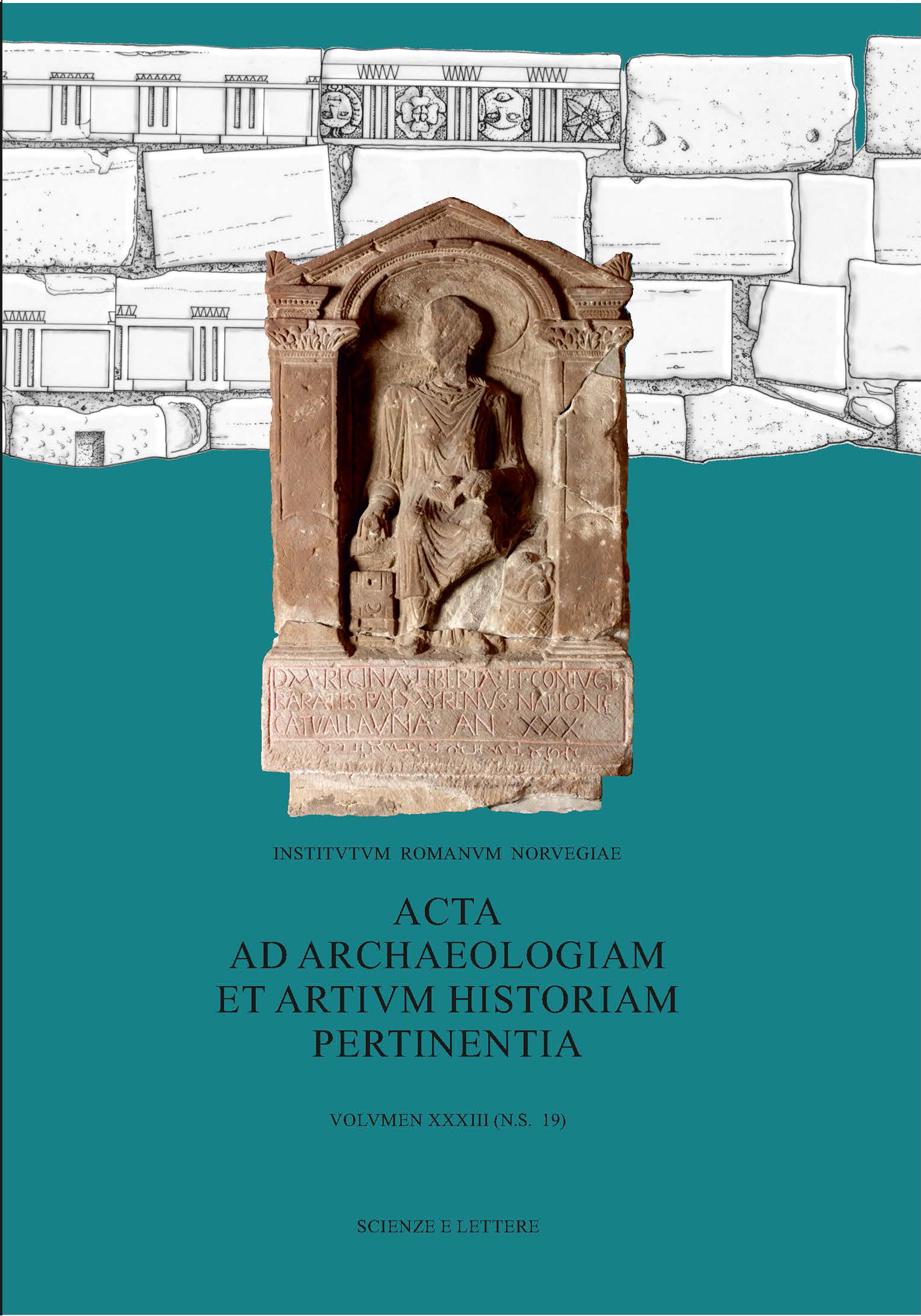The early Byzantine city walls of Hierapolis in Phrygia: demolishing and recycling the Imperial era monuments
DOI:
https://doi.org/10.5617/acta.10432Keywords:
spolia, city walls, recycling, re-use, late antique recycling, Hierapolis (Turkey: Extinct city), Late Antiquity, Imperial Rome, Byzantine TurkeyAbstract
The study concerns the city walls of Hierapolis in Phrygia (Denizli, Turkey), which were built in the second half of the 4th century AD or at the beginning of the 5th century AD, by systematically recycling architectural blocks from Imperial-era public monuments and funerary edifices. The preserved remains of the fortifications enclose the city along its northern, eastern and southern sides, leaving out large sectors of the urban area. Within the research activities of the Italian Archaeological Mission, topographical DGPS surveys of the remains were performed, and a geodatabase of the reemployed blocks was implemented with three main aims: i) the reconstruction of the building site of the city walls; ii) the identification of the demolished monuments of the Imperial-era used as “quarries” and the study of the procurement strategies of stone materials in the early-Byzantine Hierapolis; iii) the analysis of the relationship between the large building site of the fortifications and the other coeval construction sites and their impact on the socio-economic life of the city. The research allowed us to trace the development of the building site of the city walls, which, starting from the north, mainly reemployed blocks from the necropolises, North Theatre, North Agora and the shops along the plateia not-included into the early Byzantine Hierapolis. Moreover, numerous materials from the Gymnasium and other monuments located in the central part of the city but not yet identified on the ground were especially reused in the eastern and southern sectors of the walls. Lastly, the location of the recycled blocks made it possible even to reconstruct the various transportation routes linking the demolished monuments to the different sectors of the city walls.
On cover:
Late Roman wall, the portion immediately south of the West Gate (Porta Oea) with re-used blocks from first-century mausolea (Drawing by Francesca Bigi) and Tombstone of Regina from South Shields (Arbeia) (Tyne and WearArchives and Museums/ Bridgeman Images).
E-ISSN (online version) 2611-3686
ISSN (print version) 0065-0900
Downloads
Published
How to Cite
Issue
Section
License
Copyright (c) 2023 This work is licensed under a Creative Commons Attribution-NonCommercial 4.0 International License.

This work is licensed under a Creative Commons Attribution-NonCommercial 4.0 International License.

This work is licensed under a Creative Commons Attribution-NonCommercial 4.0 International License.
Authors who publish with this journal agree to the following terms:
- Authors retain copyright and grant the journal right of first publication with the work simultaneously licensed under a Creative Commons Attribution License that allows others to share the work with an acknowledgment of the work's authorship and initial publication in this journal.
- Authors are able to enter into separate, additional contractual arrangements for the non-exclusive distribution of the journal's published version of the work (e.g., post it to an institutional repository or publish it in a book), with an acknowledgement of its initial publication in this journal.
- Authors are permitted and encouraged to post their work online (e.g., in institutional repositories or on their website) prior to and during the submission process, as it can lead to productive exchanges, as well as earlier and greater citation of published work (See The Effect of Open Access).





